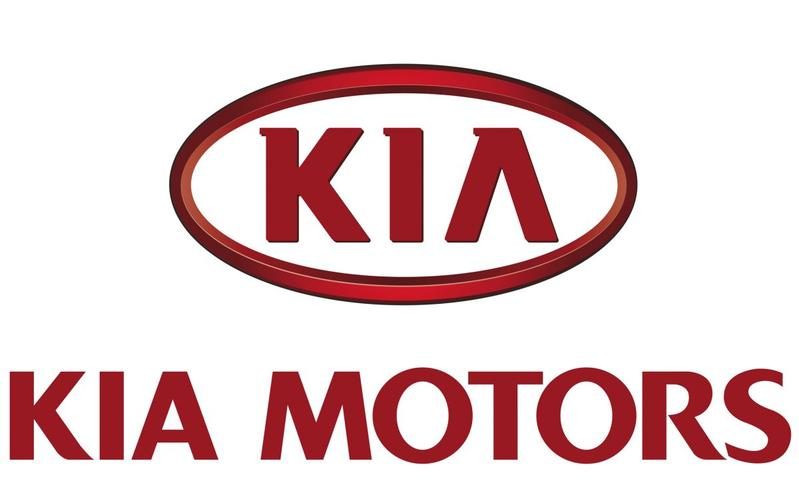By Felicia Nwosu
Over the years, some brands have demonstrated that truly, the older the fiddle, the better the tune by building endearing products that have become symbolically iconic and qualify them for the ‘legacy brand’ status. These iconic brands have established unshakeable relationships over time, with consumers, built solidly on the pillars of quality delivery, trust, and reputation. Through these relationships, these brands today, are effortlessly but carefully gliding on the balance beam, between staying relevant for legacy consumers through innovation, while also extending their legacy clutch to entangle and woo younger customers with trendier options and selling techniques all in the quest to continue their market dominance.
Some of these brands have passed through the thick and thin of the Nigerian hostile business environment to build enviable equity for their brands through brand value propositions. These efforts have been rewarded with consumers’ emotional and economic investments in the brands. All through the years, they have consistently developed concepts and other contemporary trappings to redefine their brands and evoke deep feelings that marry the past with the present to paint the future that today’s consumers can easily relate with. They have given all to meet their consumers at their touch-points and need points thereby ingraining their rand essence in the consumers’ consciousness.
Experience over the years has taught them that in a world of diminished attention span and exponential change, they need to carefully cultivate their legacy image by cleverly carving and nurturing relationships to weave the past, present, and future together for consumers.
In no special order, MARKETING EDGE, the foremost brand-centric advertising publication, therefore beamed its searchlight on some of the long-standing brands in the beverage category that have withstood the test of time to become legacy brands.
Nescafe
Nescafe, the flagship of Nestlé is known as a global coffee brand. The name is a portmanteau of the words “Nestlé” and “café”. Nestlé first introduced their flagship coffee brand in Switzerland on 1 April 1938.
This is a brand that encourages consumers to start the day strong and finish strong with its rich aroma and great coffee taste. This aromatic captivating brand believes there’s a Nescafé to suit everyone, at every time of the day. All consumers need to do is to find the flavour and intensity that suits them.
Nescafe over the years has demonstrated that the older a brand gets the richer and more robust it becomes by increasing its portfolio to boost its original signature blend with new blends that are more appealing to younger consumers. It achieves this by infusing some razzmatazz into its rebranding, which includes the Nescafe Classic, Nescafe 3in1, and Nescafe 2in1 Coffee Mix, as well as Nescafe Cold Latte, an afternoon latte, all, are available in both large-sized bottles and conveniently single-serve sachets, with no generational gap attached.
Also, in its quest to build on its past to shape its future by rendering service that on-boards succeeding generations, it pioneered the deployment of mobile hawkers in taking Nescafe coffee to the nooks and crannies of the cities. The specially branded trucks, bicycles, and cups ensure the brand is always in the face of the consuming public. This has made Nescafé coffee-taking easy, accessible, affordable, and more personalised for consumers to enjoy and Savour wherever and whenever they want it. It has equally created employment for the youths.
Lipton Yellow label
Being the biggest tea brand with a presence in over 190 countries, Lipton Yellow Label has tenaciously become both a legacy and heritage brand by figuring out how to marry its legacy with its transformative initiatives in championing healthy lifestyles among Nigerians all in sync with the evolving preferences and vibes of today’s customer. This is a trend both the older and younger generations crave from today’s brands. Lipton tea yellow label has striven to create genuine connections between people and has consistently sustained the unique same taste it has been known for, to help people feel happier and healthier.
To remain relevant as an experienced brand that understands the concept of change in consumers, it launched a new variant, called “Extra Strong” into its product line to make the happy moment more meaningful and special over a cup of tea.
Also, the healthy rivalry between Coca-Cola and 7UP Bottling Company has been taken to the ice tea segment. Lipton Ice Tea was launched by Seven-Up Bottling Company (SBC), to compete with Chi Ice tea by Coca-Cola. In tandem with its reputation as a legacy brand, the product was strategically launched on the platform with the largest number of youth’s eyeballs; Big Brother Naija (BBN). It was also promoted as one to raise health awareness for young urban consumers looking at healthier options such as ice tea among beverage consumers. This has further boosted Lipton Yellow Label’s Tea brand positioning. Euromonitor in its December 2019 report, using the retail value share terms for 2019, revealed that Unilever Nigeria, manufacturer of Lipton Tea is the leader in the tea market.
Nigeria’s leading tea brand first came to Nigeria in 1959 under the Van Den Bergh Foods Company but took a new phase and identity as part of the Food and Drinks Division of Lever Brothers in 1985. Lipton Yellow Label has impacted about 1,000 Nigerian widows by supporting them with necessary care packs and seed funds to start a business, through its campaign, titled: Lipton’s ‘Reason To Smile’.
Capri Sun
Capri-Sun was introduced in Nigeria in 1982 and has set a long-term partnership with Chi Limited which is now mainly owned by The Coca-Cola Company. Despite its age, it has continued to maintain its dominance which no brand has been able to disrupt in that segment. Capri-Sun is a delicious fruit drink made from natural sun-ripened fruits. It’s the single largest selling kids’ fruit drink category in Nigeria and it is also one of the leading kids’ drinks in more than a hundred countries worldwide. It is the pioneer in the beverage in a stand-up pouch in Nigeria and it has continued to introduce newer flavours that resonate with customers and ensures that every sip is naturally preserved for children’s healthy living.
Milo
Milo, from the home of a leading company, Nestle, is a heroic and a legacy brand with a wealth of history that encourages heroism in children. This unique feature has continued to be the endearing force that unifies the brand with mothers and their children. It has also introduced various irresistible academic championship programmes, thereby creating a more enduring connection with the children, schools, and families. Also, it reintroduced some new ideas into its production with the MILO Activ-Go variant which is a favorite amongst many due to its unique taste.
Milo has evolved in its content and packaging but has preserved its brand promise in building champions, differentiating it from other competing drinks in the category.
Despite its long stay in the Nigerian market, its impactful touch remains incomparable because Milo takes kids’ development seriously; this has helped it to sustain its position while still making waves. It has long been known as an energy beverage strongly associated with sports and good health. While MILO is named after Milo of Croton, a Greek wrestler who lived in the 6th Century BC and possessed legendary strength. It is a brand that believes that ‘Milo PLUS mom’ help raise a champion child through a mother’s day-to-day driving force. This striking force in the brand has continued to speak in every of its innovative journey.
Bournvita
Cadbury Bournvita, as it is popularly called, is one of the pioneering brands from Cadbury. It has continued to move side by side with Milo as a competitive brand. In its bid to remain a legacy brand and a market leader in its category, it has adapted and reinvented itself severally just to be in tune with today’s consumers’ taste, despite its age-long presence in the market. To improve nutritional needs, as vitality and energy-giving product, the firm has included more essential vitamins and minerals in its content to give that great chocolaty taste of goodness.
The brand began full local production in 1965 but was re-launched in a world-class, environmentally-friendly polypropylene jar.
Coke, Fanta, and Schweppes
These products from the same Coca-Cola Bottling Company are well-known legacy brands that have been satisfying consumers’ thirst for ages. They have proved through the years that they are here to stay and no brand can diminish the market penetration and iconic presence of these early market brands even in the face of the emergence of new market entrants. Over and over again, these brands have reinvented themselves, giving consumers such user experiences that continue to surpass expectations by developing innovative solutions to constantly remain in the consciousness of the consumer.
They have learned to tap into the tenor of younger consumers’ lives to find ways to connect with them through the use of surface-level cues, such as sub-culturally relevant music, entertainment, fashion, or deeper cultural storytelling, leveraging younger generations’ worldviews, ideologies, and politics to remain as market leaders.
Variety remains the guiding principle for these brands as they keep evolving. Meanwhile, Schweppes has extended its brand story recently, when it dived into a new realm with varieties of tastes and colours to connect deeper with consumers on every taste. Each of these brands has created so many memorable touch-points for consumers through various initiatives, under the Coca-Cola Foundation, where it has been touching lives positively. Most experiential and emotional was the ‘share-a-Coke’ campaign, where consumers had the opportunity to see their names, replacing the logo on the pet bottles variant of the world’s no.1 carbonated soft drink (CSD). This initiative will remain indelible in the minds of consumers and keep endearing them more to the brand.
Coke also understands the various touch-points and need points of Nigerian consumers in terms of sports and entertainment which it is leveraging judiciously by bringing entertainment straight to their homes, such as the Coke Studio. As part of its experiential milestones for memories, it gave consumers the privilege to participate in its new trend on Twitter, a social media platform, tagged ‘Coke Meal Challenge’. The challenge had Coca-Cola fans and Twitter users across the country joining the buzz with videos and pictures of various meals they have prepared with Coke as a cooking ingredient instead of a drink.
Coke since its entry in 1953 has remained dogged and has continued to dominate the Nigerian carbonated soft drink market with renewed vigour, creating nostalgic and enduring memories for every family. Fanta on the other hand penetrated the Nigerian market in 1960, coinciding with the country’s Independence. It is the longstanding clear market leader in the flavor segment of the country’s soft drinks market. While Nigerian Breweries first acquired the Schweppes franchise in 1962 but ceded it in 1976 to the defunct Nigerian Soft Drinks Limited (NSDL).
7UP
Since its launch in 1960, the brand has not stopped tending to current trends, rather, it is known to have the knack for evoking nostalgic feelings in consumers. 7Up, just like Coke, no doubt, has also remained resilient even when other brands try to muscle it out of the market. It has continued to float energetically in the ocean of stiff competition through reinvention and creativity. Its core identity and emotional connection have been consistent over time.
7Up’s status as a legacy brand has been reinforced y its unwavering support for the Nigerian youth and its commitment to the country’s development by supporting and celebrating young and promising Nigerian graduates through its fully-funded MBA programme at the prestigious Harvard Business School.












Comment
No comments found.